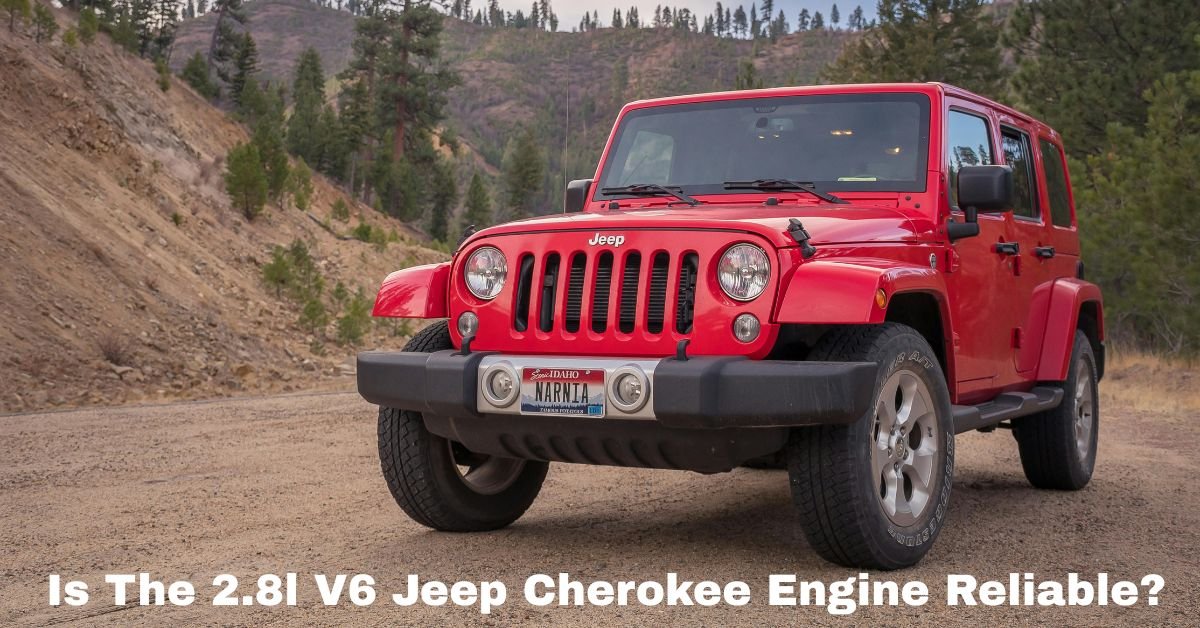When considering a used Jeep Cherokee or diving deep into the model’s engine options, one question often comes up: Is the 2.8L V6 engine reliable? This engine variant, while not as common as the 4.0L inline-six or more modern Pentastar V6s, has earned its own reputation among off-roaders and Jeep enthusiasts.
Is the 2.8L V6 Jeep Cherokee Engine Reliable? A Detailed Look
Understanding the 2.8L V6 Engine in the Jeep Cherokee
Let’s first clear up some confusion. In the U.S. market, most Jeep Cherokees were not offered with a 2.8L V6. However, there was a 2.8L inline-4 diesel engine (VM Motori RA 428) used in the Jeep Liberty (also known as the Cherokee in some markets) between 2005 and 2006. In other international markets, a 2.8L V6 may refer to petrol engines found in earlier Jeep products or non-U.S. models.
For the purpose of this article, we’ll address both interpretations:
- The 2.8L VM Motori diesel in U.S. Jeep Libertys (Cherokees)
- And the 2.8L V6 gasoline engine, more common in international or earlier versions
Regardless of the version, there are some common themes when it comes to reliability.
The Diesel: VM Motori 2.8L CRD
This is a turbocharged four-cylinder diesel engine manufactured by VM Motori in Italy. It provided a respectable balance of power and torque (160 horsepower and 295 lb-ft of torque) and was mated to Jeep Libertys (Cherokees) in the mid-2000s. But how did it perform over time?
Pros:
- Fuel Economy: One of the biggest perks was better fuel efficiency compared to the gas-powered V6.
- Torque: Excellent low-end torque made it suitable for towing and off-road use.
- Diesel Longevity: With proper maintenance, diesel engines tend to last longer than gasoline engines.
Cons:
- EGR and Turbo Issues: Owners reported frequent problems with the exhaust gas recirculation (EGR) valve, and turbocharger failure is not uncommon.
- Expensive Repairs: When issues arise, replacement parts and labor can be pricey.
- Limited Support: Not every mechanic is familiar with this engine, making diagnosis and service more difficult.
Reliability Verdict: The 2.8L CRD can be reliable if well maintained, but it’s not a “set it and forget it” type of engine. Routine care is essential, and diesel-specific knowledge helps a lot.
Must Read: 5 Best Reasons What Does The Check Engine Light Mean On Jeep Compass?

The 2.8L V6 Gasoline Engine (Earlier Models)
In some non-U.S. Jeep models (and older AMC/Jeep offerings), a 2.8L gasoline V6 was available. The most notable is the 2.8L V6 engine from GM that was used in early Jeep Cherokees in the 1980s.
Pros:
- Decent for Its Time: In the 1980s, a 2.8L V6 offered a good compromise between fuel efficiency and power.
- Simple Mechanically: Compared to modern engines, the old 2.8L V6 was easier to work on.
Cons:
- Low Power Output: Even by older standards, performance was underwhelming.
- Known Reliability Issues: Head gasket failures and oil leaks were common.
- Outdated Design: Compared to the bulletproof 4.0L inline-six, the 2.8L V6 fell short in both performance and longevity.
Reliability Verdict: The early GM 2.8L V6 used in Jeeps was not highly regarded for long-term reliability. If you’re considering a classic Cherokee with this engine, expect some rebuilding or major maintenance needs.
Conclusion: Should You Trust the 2.8L Jeep Engine?
In summary, the reliability of the Jeep 2.8L engine depends heavily on the version and how well it has been maintained.
- The 2.8L VM Motori diesel (CRD) found in the 2005–2006 Jeep Liberty (Cherokee) has potential for high mileage if maintained properly, but it’s not without its quirks and costly issues.
- The 2.8L gasoline V6 from earlier models is generally regarded as less reliable and underpowered, especially when compared to the iconic 4.0L inline-six.
If you’re in the market for a Jeep with a 2.8L engine, do your research, inspect the vehicle’s service history, and prepare for higher maintenance involvement compared to other Jeep engine options.
